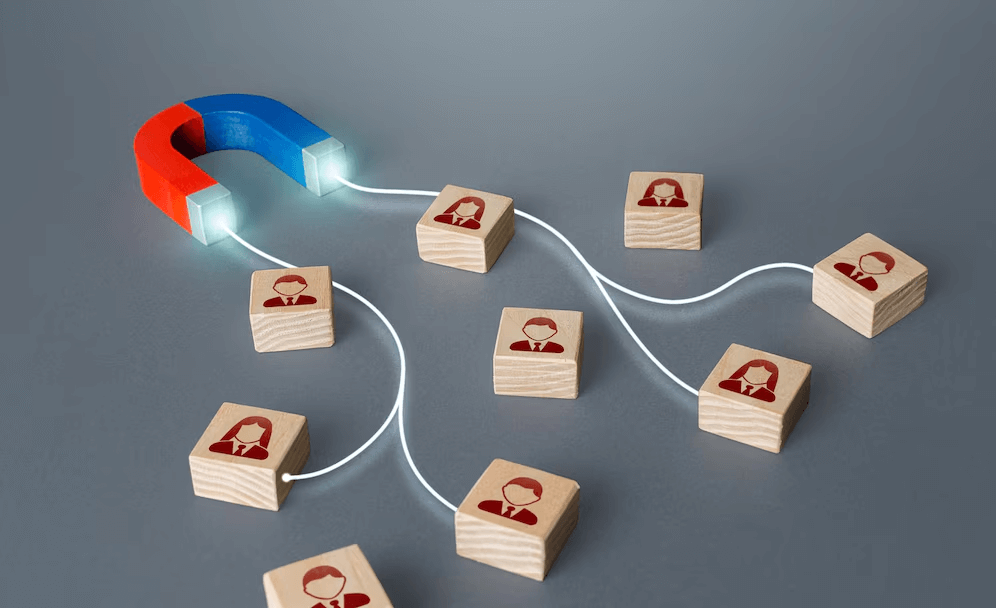In the age of digital overload, attention is the new currency. Businesses fight for every second of it. That’s why organizing lead magnets & offers the right way is no longer optional. It’s essential. A messy setup leads to missed conversions and frustrated visitors. A fresh, user-focused strategy, however, can turn passive readers into loyal buyers. Let’s explore how you can rethink and streamline your lead magnets & offers to drive more value with less friction.
Why Your Current System Might Be Failing
Many creators and marketers start with enthusiasm. They launch freebies, discounts, guides, and templates. But over time, these assets pile up. There’s no clear structure. Visitors don’t know what to do next. Worse, the team forgets what’s even live. That’s where the need for organizing lead magnets comes in. When your offers are disconnected or scattered, you’re losing leads before they even opt in. A cluttered funnel is a leaky funnel.
Map the Journey, Not Just the Magnet
Instead of throwing offers at users, start with a path. What should a new visitor do first? What comes after that? Organizing offers around user intent and timing creates a natural flow. For example, if someone downloads a free guide, the next logical offer could be a time-limited discount or access to a webinar. Every offer should be part of a chain—not a random drop. This approach helps you nurture leads, not just capture them. It keeps the experience smooth, while your list grows steadily.
Use Client-Centric Triggers
To make your lead magnets & offers more relevant, tie them to personal moments. One effective example is client birthday offers. This method adds a human touch and increases open rates. Here’s a strategy to consider: collect birth dates when someone signs up. Then, surprise them with a special freebie or bonus. You can even find inspiration from industries that have already nailed this. Check out how the gaming world uses Bonuses from Casinos on Birthday to attract returning players. Such bonuses include free chips and free codes that allow gamblers to play for free and even win real money. These personalized offers feel like gifts, not promotions. They build goodwill and drive action at the same time.
Segment, Don’t Stack
Don’t stack all offers in one place. That overwhelms people. Instead, segment based on:
- User intent (Are they learning or ready to buy?)
- Content type (eBook, checklist, video, trial)
- Funnel stage (Top, middle, or bottom)
Here’s a quick breakdown to help you visualize segmentation in action:
| Funnel Stage | Offer Type | Format |
|---|---|---|
| Awareness | Lead magnet (guide) | PDF download |
| Consideration | Comparison sheet | Spreadsheet |
| Decision | Discount or trial | Code or link |
| Loyalty | Birthday bonus | Personalized |
This structure keeps things clean. Users see only what’s relevant. And you can automate triggers without the risk of overlapping offers.
Rotate and Retire
Old offers can clog your workflow. They may also confuse users or reflect outdated brand messaging. Do a regular audit every quarter. Ask yourself:
- Is this lead magnet still converting?
- Is the message aligned with current goals?
- Is there a newer version that performs better?
If the answer is no, either update it or archive it. Fresh content wins attention. Outdated content loses trust.

Make Offers Visible but Not Loud
Sometimes, businesses hide lead magnets in blog footers or toss them as annoying pop-ups. You want visibility—but not interruption.
Here’s how to display them effectively:
- Add inline banners in blog posts
- Include subtle exit-intent popups
- Pin offers in social media bios
- Place banners on the sidebar
- Create a “Free Resources” tab in your menu
Test different placements. Track which locations perform best. Then double down on them.
Bundle Strategically
Another smart way of organizing offers is bundling. Let’s say you have three PDFs. Instead of offering them separately, package them as a toolkit. Add a title like “Starter Kit” or “Business Boost Pack.” This gives more perceived value.
Use bundling when:
- The offers solve similar problems
- You want to increase opt-in rates
- You’re prepping for a launch
Bundles feel more substantial. People love getting “more” for the same price—especially when that price is free.
Build a Visual Offer Library
Consider creating a visual grid of your lead magnets & offers. This works well on a dedicated page or in a Notion dashboard (internal use). Include:
- A preview image
- Title and short description
- Target audience or funnel stage
- Date last updated
This gives your team clarity. New hires, collaborators, and marketers can quickly find the right asset for the right campaign.

Track Performance Like a Product
Treat each lead magnet as if it were a product. Track:
- Opt-in rate
- Click-through rate
- Conversion rate to paid offer
- Bounce rate (if hosted on its own page)
Here’s a simple table to guide your review:
| Lead Magnet | Opt-In Rate | CTR to Offer | Update Needed? |
|---|---|---|---|
| Free Guide | 32% | 9% | Yes |
| Checklist Template | 45% | 18% | No |
| Birthday Bonus Email | 58% | 21% | No |
This clarity helps you drop underperformers and scale winners.
Personalize Beyond the Name
Adding a user’s name is just step one. True personalization includes:
- Tailoring offers based on behavior
- Recommending next steps
- Offering bonuses at key touchpoints (e.g. birthdays, anniversaries, milestones)
This transforms cold lists into warm relationships. Combine automation tools with smart segmentation to create these micro-personal moments.
Conclusion: Rethink, Reshape, Reorganize
Old methods of stacking freebies no longer cut it. Today, a thoughtful structure wins. When you commit to organizing lead magnets with purpose, you increase clarity—for your team and your users. Tie your offers to the client journey. Use moments like birthdays to personalize experiences. Build bundles, test placement, and track results. Keep your system alive, not static. Organizing offers isn’t just about neatness. It’s about unlocking hidden value in what you already have.

Chase Ortiz is part of the team at PaigeSimple, where he takes care of all the advertising requests. With a sharp eye for detail, Chase makes sure every advertising opportunity is handled smoothly, helping the site grow and reach more people. His ability to manage these tasks efficiently makes him an important part of the team.

